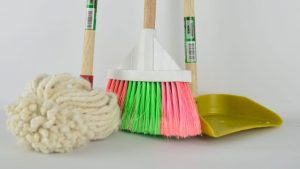This post was last updated on August 12, 2021 by Preethi Sukumaran
The Indian textile sector is the second largest employment generator after agriculture. According to a crafts council of India report, there are 4.3 million people employed directly or indirectly by the handloom sector, of which 77.9% are women. Handicrafts make up another major sector and with handlooms, the Indian hand-made sector provides employment to 11.2 million people. On top of this is the vast industrial textile sector, which includes the machine driven spinning and weaving mills, bleaching & dyeing industry and finally the tailoring / garment segment. Around 35 million people are directly employed by the textile industry.
But to feed the textile industry (hand or machine), the raw material required is cotton.
Cotton in India.
In 2013, India had the world’s largest area under cotton cultivation, 11 million hectares, which is nearly one-third of world’s total area growing cotton
India is also facing one of the most pressing human rights crises, with one farmer committing suicide every 30 minutes.

One of the greatest human rights and environmental issues we now face in the textile sector is the invasion of genetically modified (GM) cotton, which is further compounding the damage done by decades of pesticide based farming. Farmers are getting trapped in a vicious debt circle, borrowing money to buy GM seeds & pesticides. In a few years the pests become resistant to GM crops & then the farmers are forced to go back and buy expensive pesticides, again borrowing money. At the same time, their harvest is destroyed by the very same GM seeds and pesticides, leading to an endless debt cycle and then suicide comes as the end. Our research tells us that since 1995, 2.5 lakh Indian farmers have committed suicide, a majority of them being cotton farmers.
Some experts tell us that farmer suicides happen because they are unable to repay loans in the range of just 5,000 – 25,000.
A famous NYU study (http://www.chrgj.org/publications/docs/every30min.pdf) came to the conclusion, that in 2009, every 30 minutes, one Indian farmer committed suicide. Suicide often happens by drinking the very pesticide, since they cannot afford to buy anything else.

This is UNACCEPTABLE.
The Krya Sustainable Fabric Series
The difficulty in presenting this series on sustainable fabric is simply this: some of our issues and questions have no immediate answers. And it will take a great deal of will power and concerted effort to reach a holistic, sustainable solution. It will also involve a major overhaul of our consumption choices, developed over many years.
But as always, our effort at Krya is to recognise your individual effort. And tell you that every action and decision you make matters. And that your one person Satyagraha can make a difference.
Every time you decide to buy a handloom garment, or take that extra effort to buy an organic cotton t shirt or a khadi outfit, support a traditional textile craft or gift your dear one a hand block printed naturally dyed shirt, you are making a impact.

All this month of August, we are going to be writing in greater detail and feature interviews of people in the vast field of sustainable textiles.
The sustainable Indian fabric primer:
Before we commence, a quick primer on how raw cotton is converted to final finished garment is crucial. Textiles have morphed from a local village industry to a global and complex value chain, with significant human and environmental costs attached to each step in the chain.
Cotton cultivation, which is nearly 8000 years old, needs plenty of sunshine, a long frost free period, moderate rainfall and heavy, nutrient rich soil. Cotton is not just white. Naturally coloured cotton also exists in shades of red, green and brown. These colours do not fade after washing but are rare today as they has been bred out in favour of the white cotton.

In earlier times, the entire process of spinning and weaving fabric was done by each Individual household across the world. Many archeological excavations confirm that weaving was present even in Neolithic times.

Spinning of cotton was done by hand , primarily by young girls and unmarried women, so much so that the term ‘spinster’ came to mean an unmarried woman who would be at home spinning cotton.


The first spinning wheel was constructed in china and then slowly spread through medieval Europe. Our very own Charkha is a version of this spinning wheel.


The invention of spinning machinery and the powerloom during the Industrial revolution slowly put an end to the local, independent nature of textile craft. It began to recede from homes and then started to become more and more centralised.
How is fabric made today:
The four key steps to convert a boll of white cotton from the farm to a coloured fabric are illustrated in the graphic below.


Handloom textiles
This blog has attempted to chronicle India’s rich textile past by describing the detailed archaeological findings, and amphorae of roman coins that have been excavated in various port towns across India, including Arikamedu. The extensive commercial documentation of India’s trading with the world indicates a level of proficiency and sophistication in textiles that we used to possess that is unparalleled even today.
Indian fabrics were considered luxury fabrics and our weavers processed the skill to weave fabric that was fine enough to pass through a slim ring. All this sophistication came from an industry which was local, used indigenous plants and fabric, that conserved natural resources, and was extremely environmentally sustainable.
This ancient industry which once comprised of wealthy, creative weavers that were powerful members of society and considered stewards of public wealth has today degenerated and its members live in penury. Their wages are often lower than unskilled labour, they are caught in a debt trap and live lives of servitude, and they do not have the resources to improve their craft or tools of trade.
Anyone who has worn handlooms can attest to the difference the fabric makes on you. The hottest Indian summer is bearable when wearing a handloom garment as it is infinitely more breathable compared to a powerloom garment. The texture of a handloom garment is softer and more delicate as it is handled lovingly by human hands and not a machine. And every handloom garment is unique and no two saris woven using the same yarn by the same weaver ever look exactly the same.

But the handloom industry is in a state of steady decline, as both the State and consumers like ourselves fail the handloom weavers. By valuing the handloom garment less, by failing to understand how uniquely suited they are to our climate and culture, and by continually choosing Western wear that cannot be easily integrated into the Indian system of handloom weaving, we are rapidly losing an important part of our sustainable fabric tradition.
Khadi
While Khadi is also a type of handloom, it is so important to our sense of what constitutes being Indian, it deserves a separate note in itself. Khadi refers to cloth that is both hand-spun and hand-woven. Khadi is primarily made of cotton. The hand spinning of raw cotton into yarn uses implements like the Charkha. The yarn is then woven into final fabric with a loom, when done by hand, this is called a handloom.
In India, Khadi is more than a fabric; it is the symbol of the freedom movement. The Indian Khadi movement promoted total self reliance, to free Indians from the high priced fabric that was being dumped in India by the British factories. The British made fabric depended on Indian cotton which would be bought at cheap prices, sent to the textile factories, woven and then sold back to India at high prices.
The freedom struggle revolved around the use of indigenous products like Khadi and boycotting the use of non Indian made products. Khadi is a magic fabric, keeping the wearer cool in summer and warm in winter.
Unfortunately, there are two other pieces to the Khadi process, which was earlier taken for granted, but today are presenting environmental and human crises. From antiquity till the freedom movement, the cotton for the khadi was only of an Indian variety, grown organically. Today more than 90% of cotton grown in India is genetically modified variety (GM) and grown with pesticides & fertilizers.
Secondly, dyeing of the Khadi fabric is today primarily done with chemical dyes and not natural dyes. In a previous article we have covered in great depth about the environmental and therefore human hazards of chemical dyeing.
Our 68th Independence day falls tomorrow
This primer on sustainable Indian fabric aimed to test the waters and introduce you to the important concepts and issues that assail the textile industry today.
Tomorrow is Independence day. Last year, in 2013, a collective of farmers presented an organic cotton flag to the Prime Minister and urged him to hoist that instead of a flag made with Bt-cotton. Since then our Prime minister has changed, but the flag has not changed into an organic, naturally dyed flag.
So what flag will you hoist this independence day?
If you want to get a more local, and environmentally sustainable wardrobe, start reading here:
- Our introductory post on the sustainable fabric series
- On the One Person Satyagraha and why you should start one
- On the environmental and human health hazards of chemical dyes
And do tell us what you think of this new series here or on our Facebook page.




